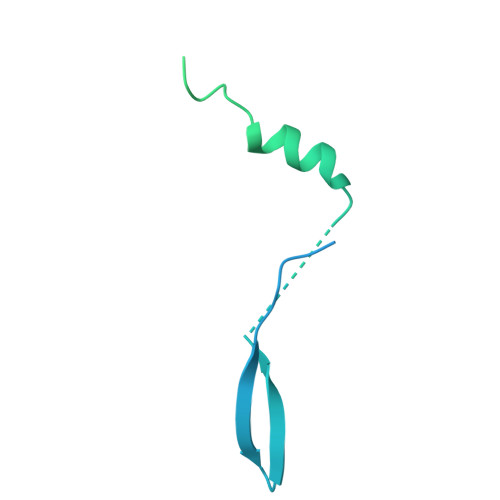Structural insight into PIF6-mediated red light signal transduction of plant phytochrome B.
Jia, H., Guan, Z., Ding, J., Wang, X., Tian, D., Zhu, Y., Zhang, D., Liu, Z., Ma, L., Yin, P.(2025) Cell Discov 11: 51-51
- PubMed: 40404641
- DOI: https://doi.org/10.1038/s41421-025-00802-3
- Primary Citation of Related Structures:
9IRK, 9ITF, 9JLB - PubMed Abstract:
The red/far-red light receptor phytochrome B (phyB) plays essential roles in regulating various plant development processes. PhyB exists in two distinct photoreversible forms: the inactive Pr form and the active Pfr form. phyB-Pfr binds phytochrome-interacting factors (PIFs) to transduce red light signals. Here, we determined the cryo-electron microscopy (cryo-EM) structures of the photoactivated phyB-Pfr‒PIF6 complex, the constitutively active mutant phyB Y276H ‒PIF6 complex, and the truncated phyBN Y276H ‒PIF6 complex. In these structures, two parallel phyB-Pfr molecules interact with one PIF6 molecule. Red light-triggered rotation of the PΦB D-ring leads to the conversion of hairpin loops into α helices and the "head-to-head" reassembly of phyB-Pfr N-terminal photosensory modules. The interaction between phyB-Pfr and PIF6 influences the dimerization and transcriptional activation activity of PIF6, and PIF6 stabilizes the N-terminal extension of phyB-Pfr and increases the Pr→Pfr photoconversion efficiency of phyB. Our findings reveal the molecular mechanisms underlying Pr→Pfr photoconversion and PIF6-mediated red light signal transduction of phyB.
- National Key Laboratory of Crop Genetic Improvement, Hubei Hongshan Laboratory, Huazhong Agricultural University, 430070, Wuhan, Hubei, China.
Organizational Affiliation:


















